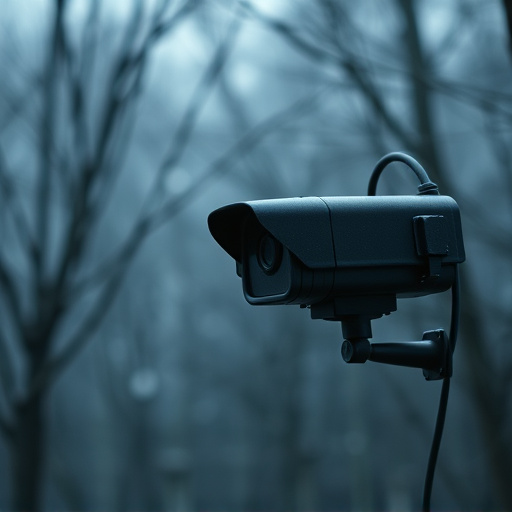Remote viewing technology, integrated into nanny surveillance systems, enables parents or caregivers to discreetly monitor children's activities from a distance using hidden cameras and microphones connected to a central monitoring station. Effective utilization requires understanding system functionality while ensuring privacy and legal compliance, including knowledge of local regulations and clear disclosure of camera presence. Detecting hidden monitoring devices necessitates technical tools and keen observation, with regular updates on security protocols crucial for countering sophisticated systems. Respect for personal boundaries and maintaining trust are paramount for responsible usage of these systems.
Uncover the insidious signals of hidden monitoring devices with our expert guide. In an era where privacy is paramount, understanding remote viewing technology, like that found in nanny surveillance systems, is crucial for safeguarding your personal spaces. This article equips you with strategic tips to detect these covert signals, empowering you to maintain your peace of mind. From identifying electromagnetic emissions to recognizing audio frequency patterns, learn the tricks and tools to spot hidden monitoring devices and protect your privacy.
- Understanding Remote Viewing Technology
- Strategies for Detecting Hidden Monitoring Signals
- Ethical Considerations and Legal Guidelines
Understanding Remote Viewing Technology
Remote viewing technology, a component often found in sophisticated nanny surveillance systems, is a fascinating concept that enables individuals to observe and gather information from a distance. This method leverages advanced tools and techniques to capture and transmit visual and auditory data without physical presence. By employing these remote viewing capabilities, parents or caregivers can discreetly monitor their children’s activities, ensuring safety and providing peace of mind.
In the context of nanny surveillance, remote viewing involves setting up hidden cameras and microphones in strategic locations, connected to a central monitoring system. This technology allows real-time observation, enabling users to interact with the remote site via live feeds and audio communications. Understanding how remote viewing works is crucial for effectively utilizing these systems, ensuring privacy, and maintaining legal compliance when it comes to hidden monitoring device signal detection.
Strategies for Detecting Hidden Monitoring Signals
Detecting hidden monitoring devices, often employed in situations like remote viewing or nanny surveillance systems, requires a blend of technical know-how and keen observation. One effective strategy is to utilize advanced signal detection tools that can pick up on faint electromagnetic signals emitted by these devices. This involves investing in sensitive meters and scanners capable of identifying unusual radio frequency (RF) patterns or infrared emissions that might indicate the presence of hidden cameras, audio recorders, or trackers.
Additionally, physical inspections become crucial. Look for any signs of tampering with walls, ceilings, or appliances, as these could be hiding spots for covert monitoring equipment. Pay attention to unusual wiring, new or unfamiliar devices, and even small gaps or openings that might accommodate hidden sensors or transmitters. Regularly updating security protocols and staying informed about the latest surveillance technology can also aid in countering sophisticated hidden monitoring systems.
Ethical Considerations and Legal Guidelines
When employing a remote viewing nanny surveillance system, it’s crucial to navigate the ethical and legal landscape carefully. While monitoring can provide peace of mind for parents, ensuring the privacy and autonomy of all involved parties is paramount. Each jurisdiction has specific laws regarding hidden camera use, so understanding local regulations is essential before deploying any such device.
In many cases, consent from the individual being monitored—in this scenario, potentially a nanny or child—is legally required. Additionally, cameras must be clearly visible and disclosed to avoid invasion of privacy. Ethical considerations also dictate respect for personal boundaries and the preservation of trust within the caregiver-family dynamic. Employing these tips can help ensure that remote viewing nanny surveillance systems are used responsibly and in compliance with both law and ethical standards.
In the digital age, privacy has become a delicate balance. While remote viewing technology offers valuable insights, it’s crucial to employ ethical practices and adhere to legal guidelines when using a Remote Viewing Nanny Surveillance System. By understanding how these hidden monitoring devices operate and implementing effective detection strategies, individuals can safeguard their personal spaces and ensure informed consent in the use of such technologies.
